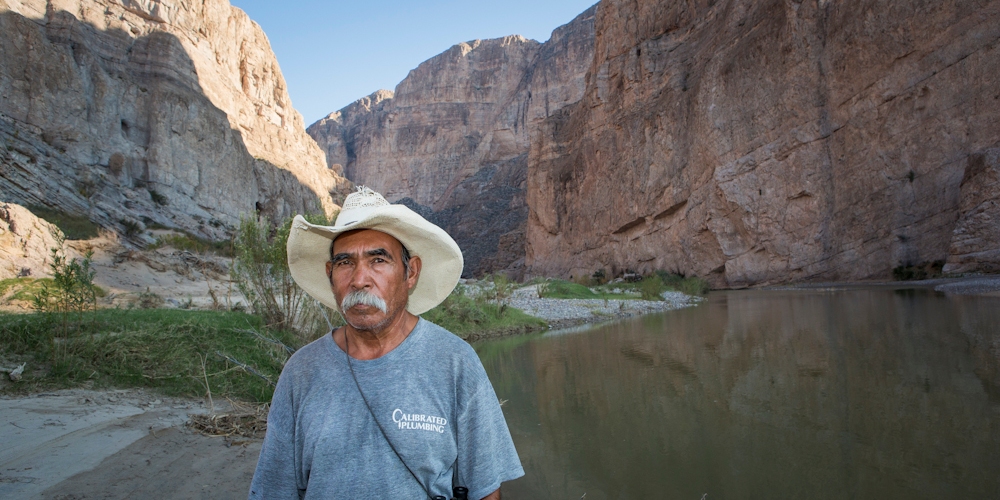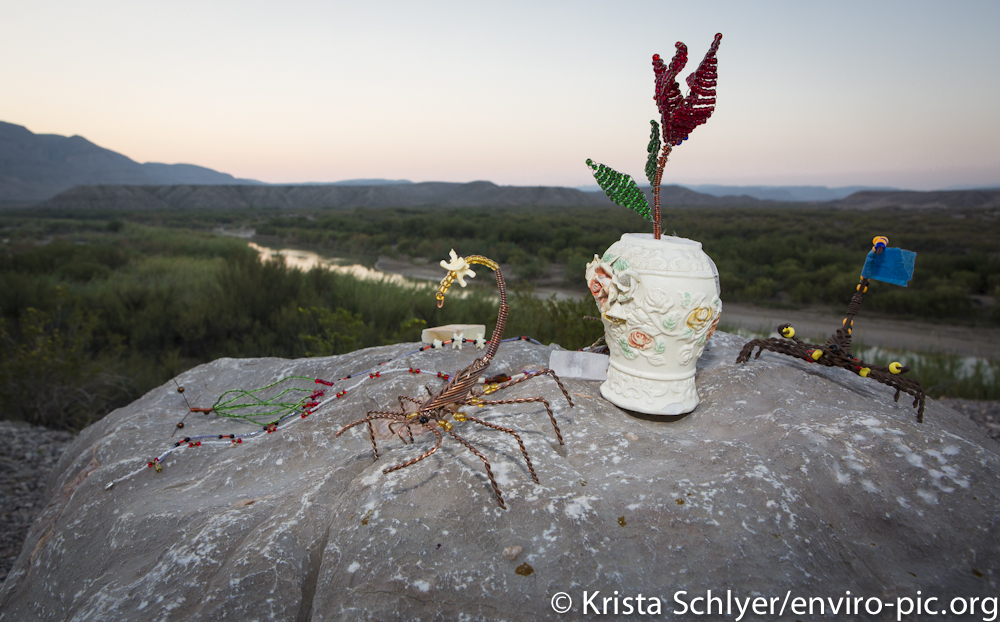
139. A pauper’s cemetery in southern California houses many graves of unidentified migrants lost in the desert.
As I watched Donald Trump repeat his “more border wall” mantra last night during the first GOP primary debate, my mind returned to a moment earlier in the day when I was working on an annual report for Humane Borders, a non-profit dedicated to providing humanitarian aid to vulnerable migrants traveling the arid Arizona borderlands. I had been editing a profile of Humane Borders’ Executive Director Juanita Molina, in which she talked of what motivated her to do the work she does. She recalled a day a decade ago when she was working for an HIV clinic in California and a young man came in asking for help. He led Juanita to a car where she saw another young man, emaciated and unmoving. She thought he was dead. But just then he opened his eyes and smiled at her. Juanita got the young man and his partner to the emergency room, where he survived for four days. During that time they told Juanita of the arduous journey that had brought them to the Arizona border, and how, when the one man became too weak to walk any further, his partner strapped him to his back and carried him. Stories like this, weighty with love, sacrifice and courage, are not rare in the borderlands. I have heard many over the past 8 years since I’ve been working in the region. In my book Continental Divide: Wildlife, People and the Border Wall I recount the story of Josseline Quinteros, a 13-year-old girl who died in the Arizona desert when she grew weak on her journey from Guatemala, and rather than hold up her group she urged a coyote to leave her and get her little brother safely to their mother in Los Angeles.
Donald Trump cannot see people like Josseline and the men in California, or even Juanita, because he understands life only in two dimensions. He is afraid and loud because of this deficit of understanding in a world of infinite dimensions and complexities and beautiful cruel textures. There are an eternity of forms of human relationships and challenges and infinitely faceted connections within the world of nature, a truly eternal complexity of every element interacting with every other. You can see glimpses of it in the love bond of a man who carries his dying partner through the desert and a sister willing to give her life so that her little brother will live, and the many devoted people who like Juanita, and Humane Borders, give everything they have to help those in crisis. And you can see it quite clearly in every moment that you look into the quiet world of nature. This world is an endless imaginarium of beauty, heroics, love and death. So, so much more than a mind constrained in two dimensions of fear and power can understand. Trump is not alone. Almost every candidate on that stage parroted his call for more wall, more enforcement, more militarization, serious consequences for “illegals.” And with their loud voices they have been able to shape the story about immigration in in this nation built by immigrants–depicting migrants as criminals and freeloaders. These people, migrants, are really no different from us; they are heroes and loved ones and mothers and sons and fathers and daughters, not invaders or threats. And “illegal immigration” will not end until we have a legal immigration system that works by accounting for the great demand for cheap labor and by creating trade laws that treat our neighbors fairly. The economic arguments for border militarization are laughable from every angle, from the tens of billions of dollars we have thrown away building a wall people can climb in 10 seconds, to the idea that immigrants are a drain on our economy. But in Washington DC, on either side of the partisan isle, there are very few who will stand up for Josseline or the borderlands. And the media is complicit for glorifying or even vilifying the Donald Trumps of the world; they help perpetuate the small, distorted two-dimensional mindset that has led to endless ecological distruction of the beautiful borderlands and the deaths of more than 6000 migrants. What a pity. For the Donalds and their inability to see clearly, and for the rest of us, who suffer the consequences.










